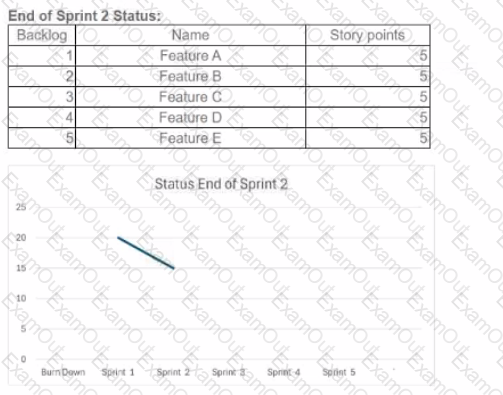The product owner working on an agile software development project has brought all the Scrum team members together for the first sprint planning meeting. The team has read the user stories and has provided estimates to complete these user stories. The product owner plans to empower the team to get the work done.
What is this an example of?

Based on the backlog metrics in the chart what can explain the jump in points at the end of iteration 4?
A diverse team can sometimes create misunderstandings and conflict, leading team members to isolate. How can an agile project manager promote effective communication and collaboration among team members with diverse backgrounds and perspectives?
The productivity of an agile team has fallen significantly in the last sprint. The team members have not mentioned any impediments but seem to be fatigued.
What should the agile practitioner do?
A development team is calculating the number of story points they have completed at the end of an iteration. Although quality assurance (QA) passed and successfully demonstrated one feature, it is not being included in the release package.
Should the team add the feature's story points to their burndown chart?
Why is stakeholder engagement important for project success?
During the implementation of a story, a scrum team notifies the scrum master of a technical challenge that is causing a delay. What should the scrum master advise the team to do?

Case Study
An agile project lead for a company is leading a sales team who has committed to delivering new product functionality to the customer at the end of five sprints. The agile project lead performed initial planning with the team and with the team's support has committed to the scope and deadline.
Check in with the project in three stages to answer the associated questions.
How do two additional features and more story points added by the product owner impact the team's progress and ability to complete work within the iteration, considering the burndown rate of the team has not changed? (Refer to the Case Study and End of Sprint 3 Exhibit)
A product owner concludes that the majority of a project's value can be delivered by completing only the first half of the prioritized backlog. What should the product owner do next?
How can an agile practitioner ensure that all key stakeholders are properly engaged in planning?

